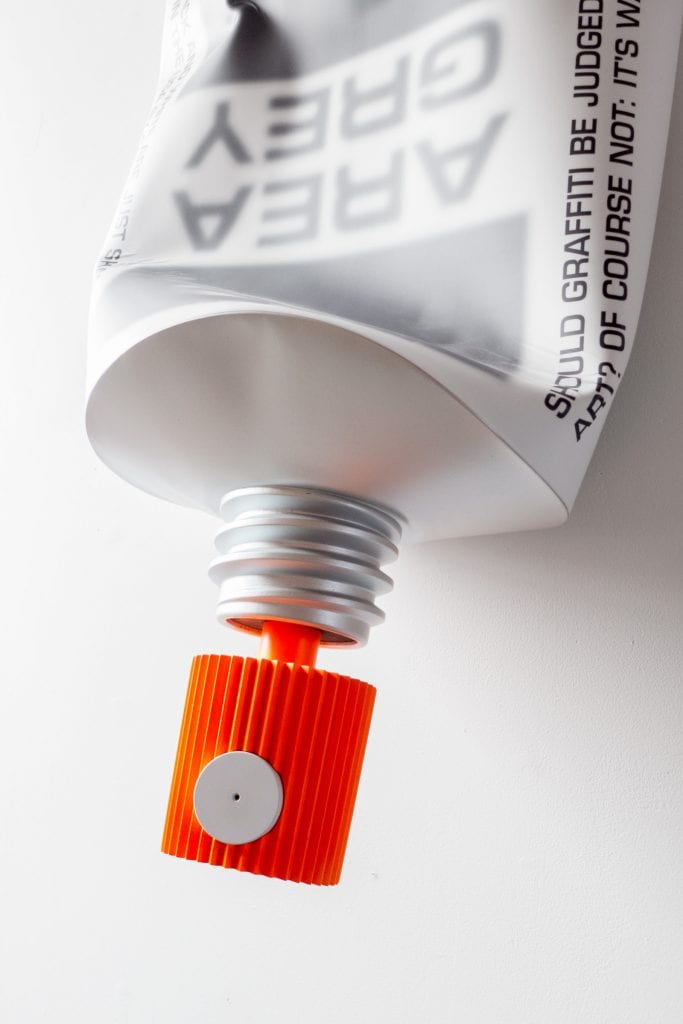Miles Jaffe creates oversized paint tubes oozing manifestations of his sardonic wit. His contemporary hanging sculptures consist not only of these paint tubes, but matchbooks and his “Notes To Self.” Each clever creation is ironic, particularly in the way he titles them. Dog Blue depicts a paint tube “squirting” out the beginning of what appears to be a balloon animal (an ode to Jeff Koons’ Balloon Dog). He often uses these paint tubes as a medium to represent other artists – Banksy and Warhol, for example – as well as pop culture in general. Going further simply by his wry nature, the fact that you can buy works directly on the website attests to his dedication to the idea that art is a commodity. Another ode to Koons, but defined by his own mantra that the relationship between the artist, medium, and the product is the very nature of art itself and should be embraced. Jaffe considers it “a parody of parodies.” Art and commerce are inherently interwoven, so why should his own website and brand not reflect that? Jaffe explores the impact of that co-dependency in his own unique visual language, more of which you can see here.
Where are you from and when did art first enter your life?
When I was 11 my father gave me a print by Claes Oldenburg, whose drawings are studies for sculptures. My mother was a painter and my father was an architect. We lived in an abandoned schoolhouse in Berkeley until my parents split. When I was seven my mother died and I moved into my father’s architectural office in Manhattan. Literally. My bed was a drafting table and construction sites were my playgrounds.
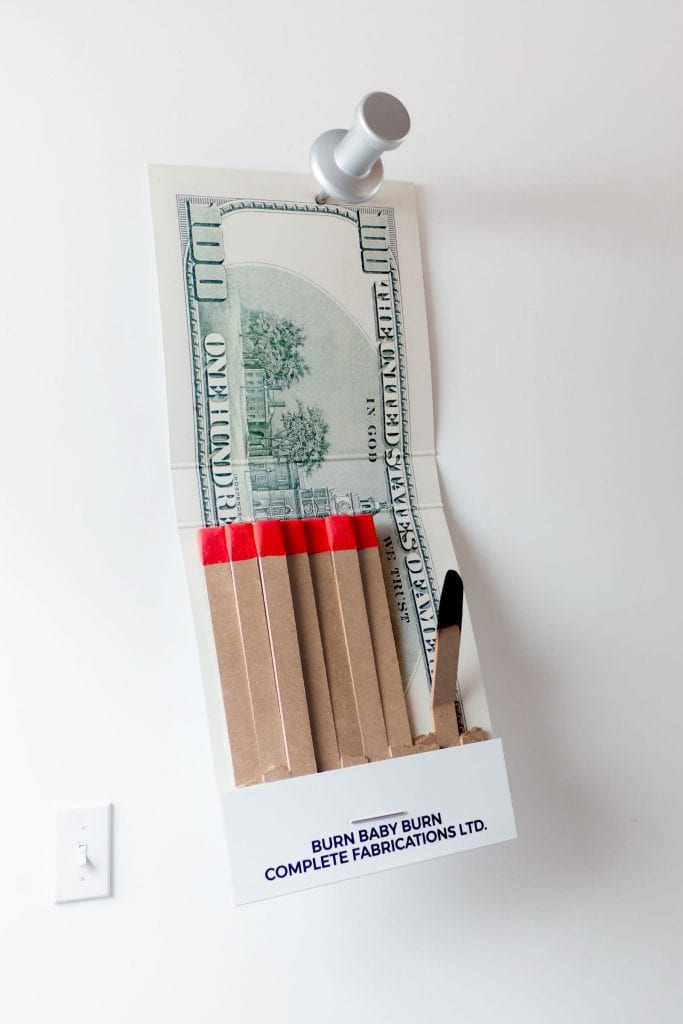
Courtesy of the artist
What drew you to sculpture?
I’ve always made things: models in the architectural office after school, working in construction as a youth. At RISD I studied industrial design, furniture under Tage Frid, sculpture with Arnold Prince, and jewelry and metal-smithing. Later I designed and built architecture and furniture. Drawings for me are plans for creating physical objects.
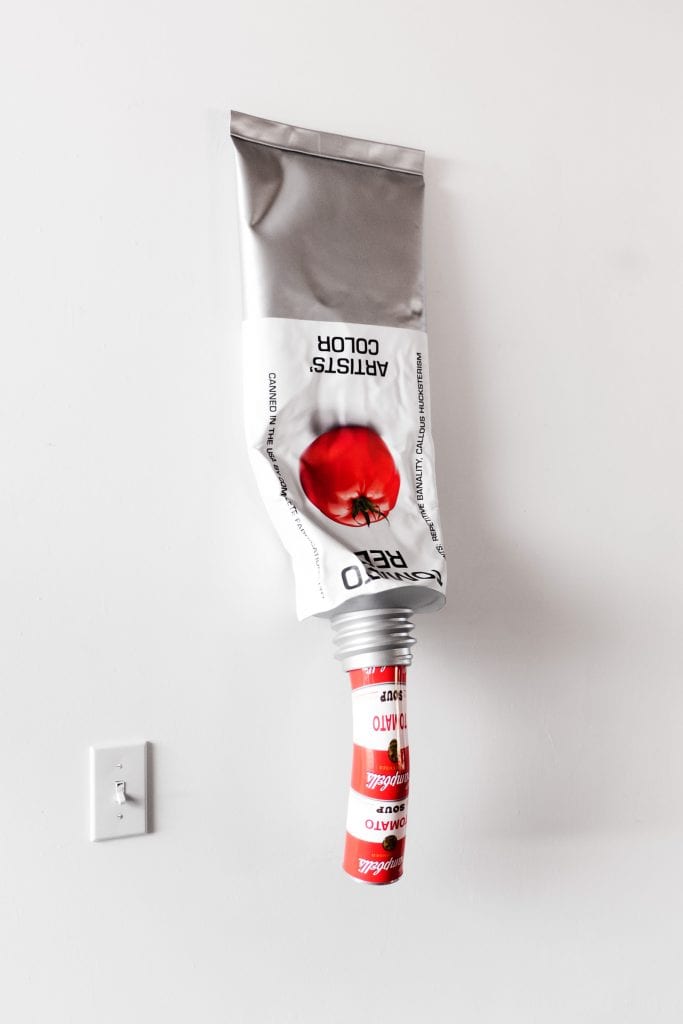
Courtesy of the artist
Where do you find inspiration to name the colors of your paint tubes; things like Digger Gold and Hard Blue?
Puns and wordplay are the basis of much of my work. The paint tubes are a visual language that has – like speech – multiple interpretations working on different levels. Language is a wonderfully fluid medium – no pun intended.
The Artists’ Color series paint tubes are built on the visualization of color idioms. Box office gold drips an Oscar, black market squeezes out a roll of cash. We think of primary colors as red, yellow, and blue but they are also the red, white, and blue of the American flag. For some the green of cash is a primary color. A new definition for primary colors is created by combining the latter two idioms.
This works from idiom to concept and vice-versa. Warhol becomes Tomato Red; Roy Lichtenstein is 4 Color Process – the method for printing comic books. Area Grey references street art and Banksy, who often works in a ‘grey area’ outside the traditional confines of art. In this case the visual pun is a tube of paint with the nozzle from a can of spray paint.
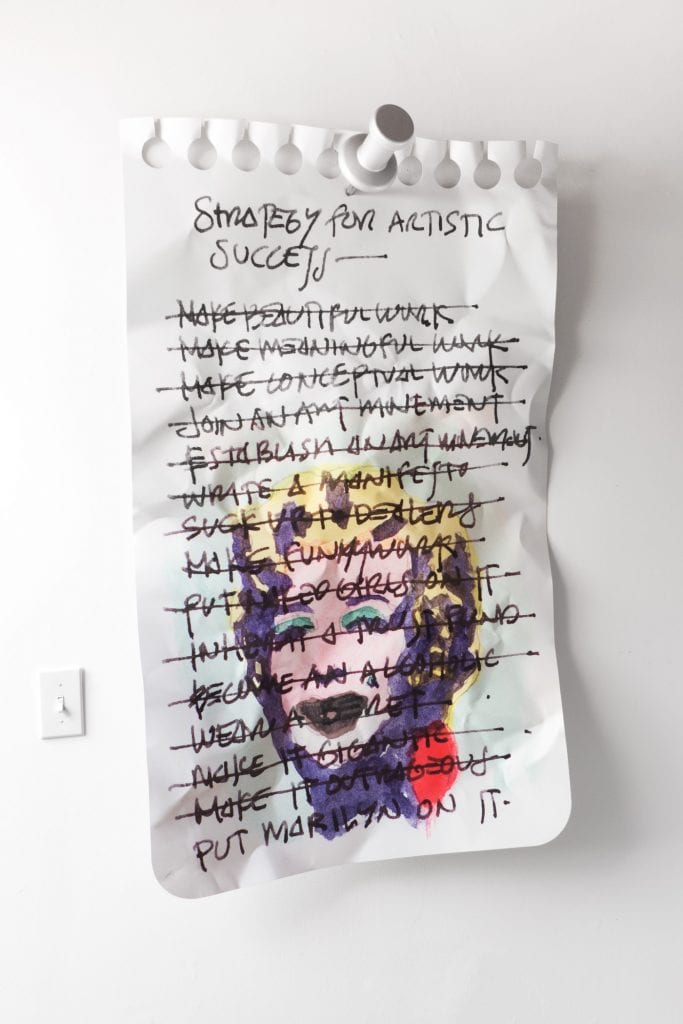
Courtesy of the artist
What does a day in the studio look like for you?
The day begins in the shop with fabrication. With multiple lines of work assembled from a multitude of components there are always things to make: forms in sheet metal, paint drips in various materials, giant matches and push pins for the matchbooks, and so on.
Afternoons start in the studio dealing with some of the many necessary administrative tasks including galleries and collectors, ordering supplies, scheduling shipments, etc.
Then I’ll work on concept development, drawings, watercolors and digital graphics, or I’ll go back to the shop for more fabrication, final assembly, photographic documentation, and packing work for shipment.
Late in the evening I’ll often be in the studio building digital models for 3D printing, planning the next day’s tasks, and catching up on promotion, database and web maintenance, and other chores that I’ve ignored for too long, like this interview.
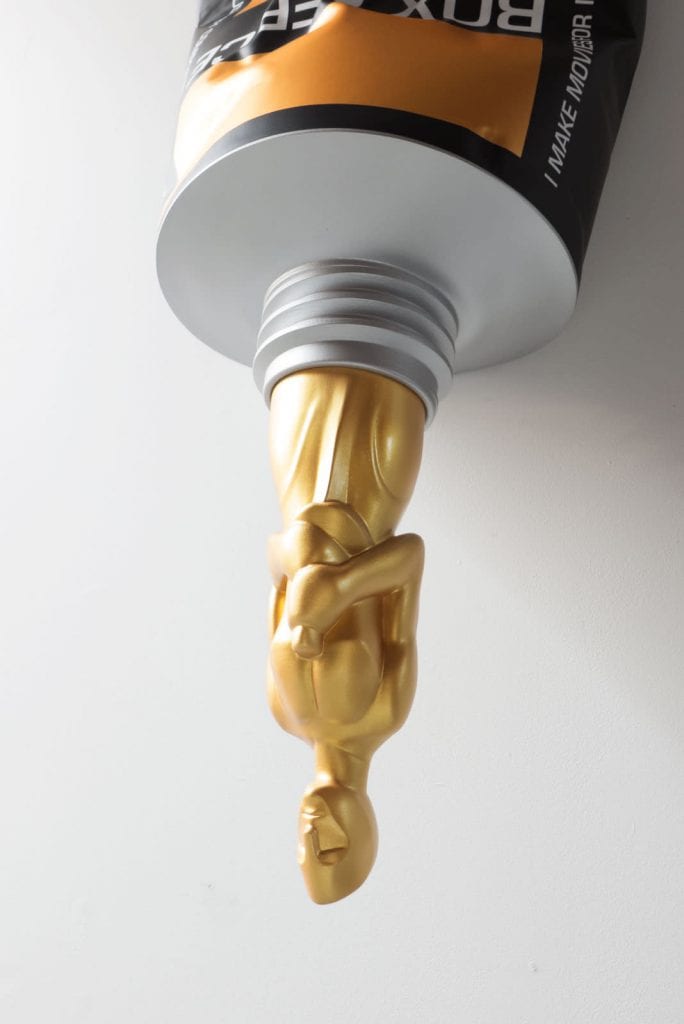
Courtesy of the artist
Are there any larger questions you look to explore with your art?
What is the true nature of art?
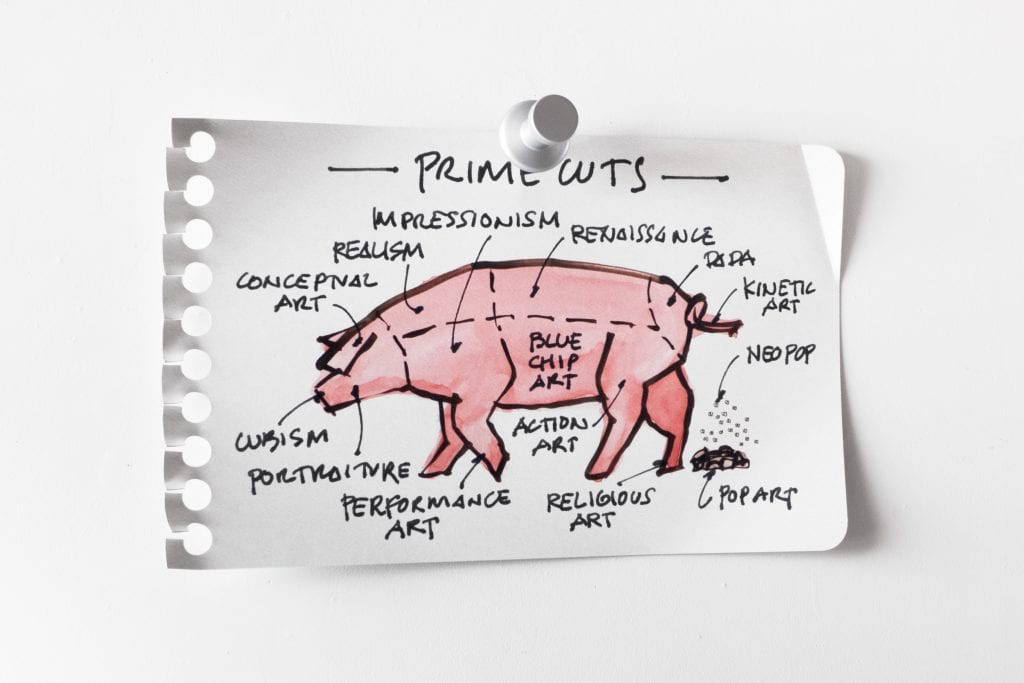
Courtesy of the artist
Does your work reference any art historical movements? If so, which ones?
I use the language of Pop – common objects at scale and elements of advertising – to conceptually reference modern and contemporary art including Pop. Much of my work requires an art education to be fully grasped.
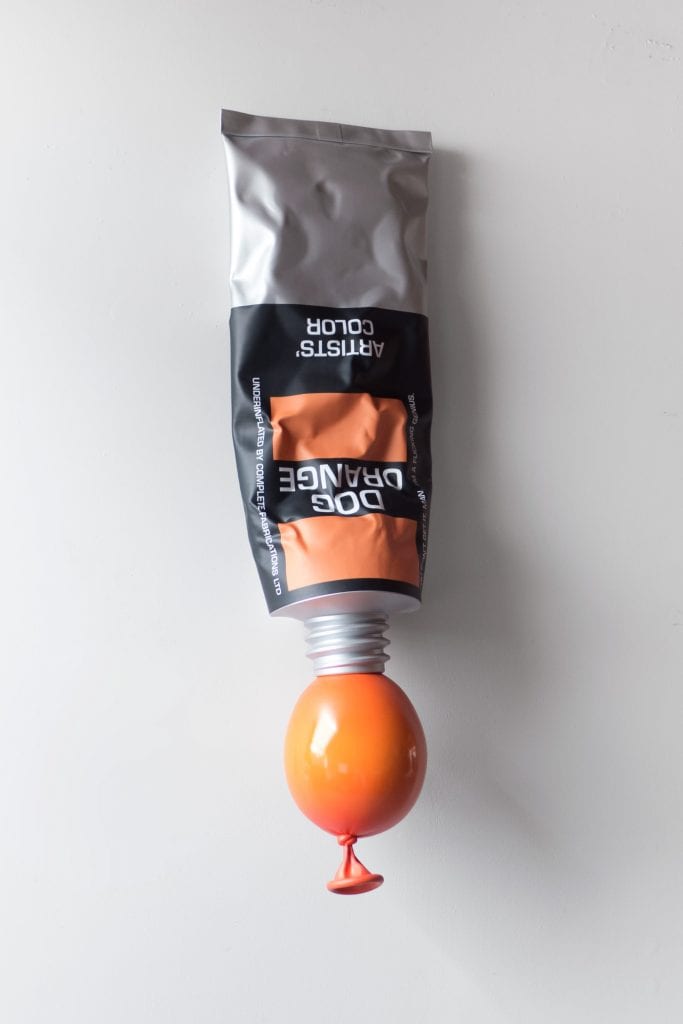
Courtesy of the artist
Who are some other artists, whether painters, musicians, directors, etc., that influence you?
That’s a long list. Author Stanislaw Lem. Duchamp, Calder, Escher, Oldenburg, Picasso, Gary Larson, Wim Delvoye’s Cloca series. Hitchcock, Tarkovsky, Kubrick, Jarmush, Hal Hartley’s Henry Fool, Peter Sellers’ Being There. The Moody Blues, Pink Floyd, and funk. Frank Lloyd Wright, Greene and Greene, Norman Jaffe, Jokan Ohama. Those are some of the great ones. Influences can be positive and negative, which is probably why I enjoy black comedy so much.
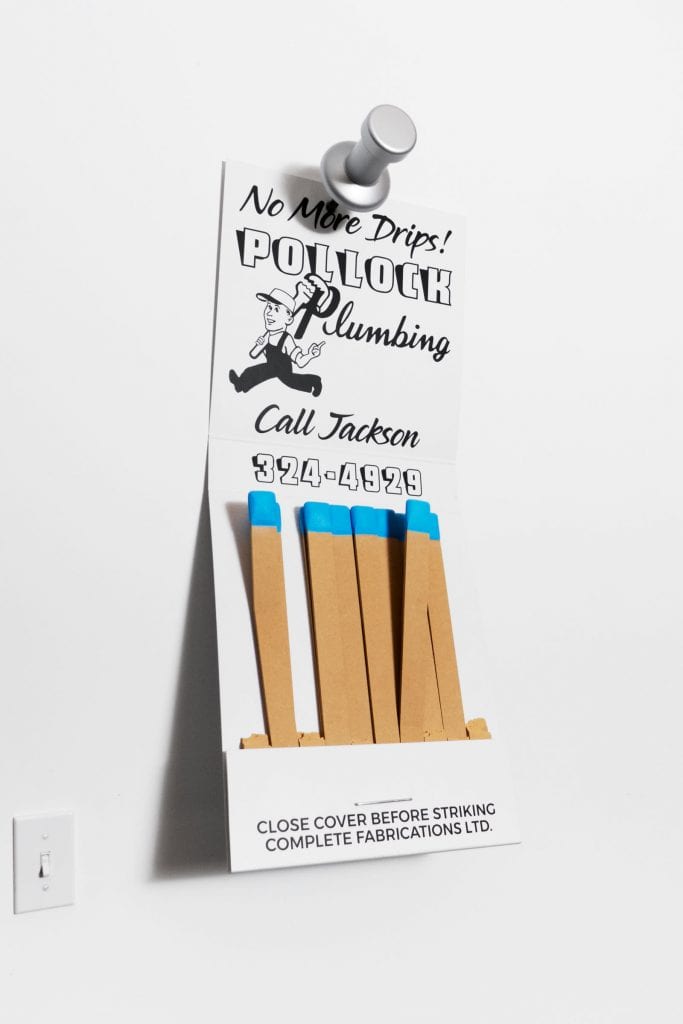
Courtesy of the artist
What would happen if someone were to hang your paint tube sculptures the opposite way, meaning facing upwards versus your traditional upside down?
Upside-down paint tubes are a reflection of my world view. The drips from the tubes are responding to gravity. Hanging them “dripping up” would defy this logic. I prefer to defy gravity with levity.
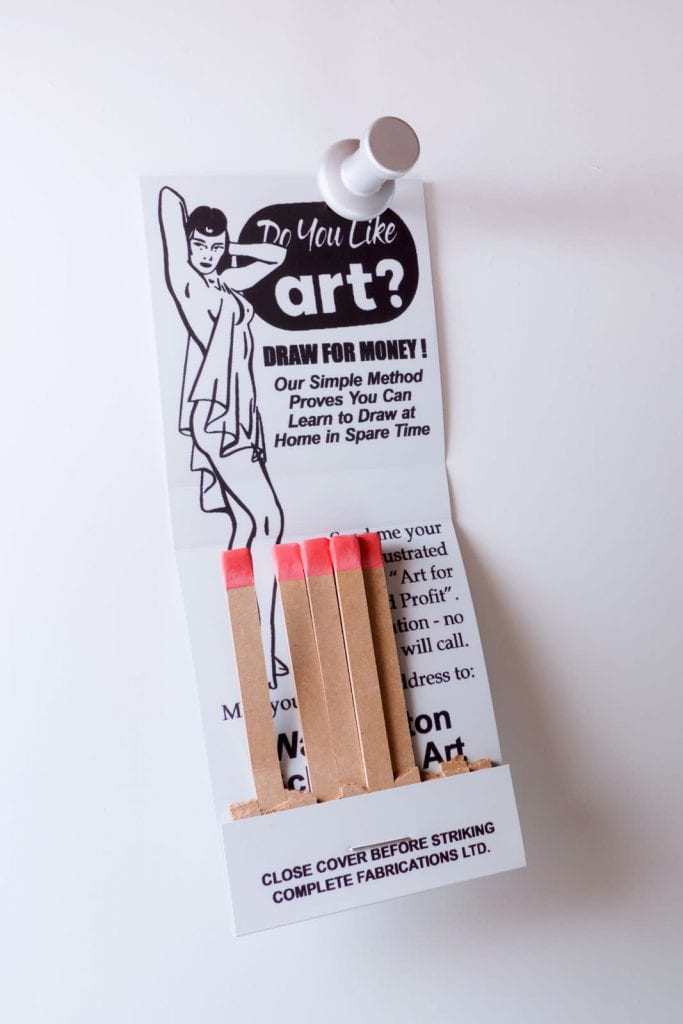
Courtesy of the artist
On your website, you state that you consider yourself a cynical optimist. How might this idea of trying “to figure out why things don’t work” translate into your work?
To fully understand how things work you must understand how they don’t. This is the basis of my rigorous design training and experience in design and construction: critically analyzing everything in an effort to find truth and wisdom. This is applied both technically in fabrication and conceptually in the content of the work.
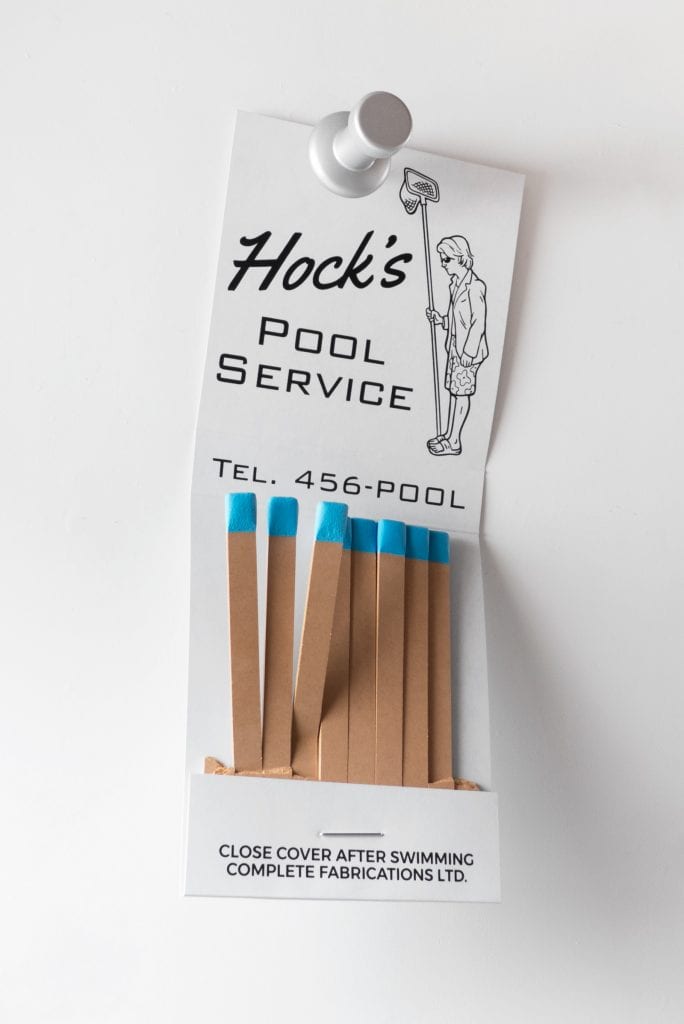
Courtesy of the artist
At the end of every interview, we like to ask the artist to recommend a friend whose work you love for us to interview next. Who would you suggest?
I’m going to give you two, both Instagram friends. I greatly enjoy and admire Romulo Celdran‘s work, and Michael John Hunter is on to something really big.
Miles Jaffe Feb. 2020
